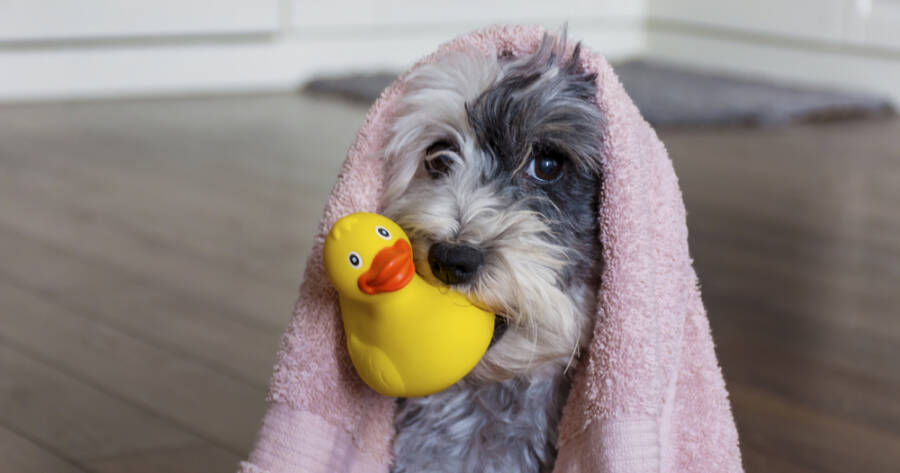Regular grooming keeps pets clean, comfortable, and healthy, but professional services can be expensive. Learning to groom your pet at home can save money while strengthening your bond. With a few basic tools and techniques, you can keep your furry friend looking great without frequent trips to the groomer. A little patience and practice will make the process easier over time.
Choosing the Right Grooming Tools
Before starting, gather the right tools for your pet’s coat type and grooming needs. Brushes, combs, nail clippers, and pet-safe shampoos are essential. Short-haired pets may need soft bristle brushes, while long-haired breeds require de-shedding tools or detangling combs. A high-quality pet nail clipper or grinder will help keep nails trimmed without discomfort.
Investing in a pet-specific hair clipper can make trimming easier. Adjustable clippers allow for different fur lengths, making them useful for breeds with fast-growing coats. Always choose products designed for pets rather than human tools, as they are gentler and safer. Over time, these supplies will pay for themselves compared to professional grooming fees.
Bathing Your Pet Without the Hassle
Bathing is an important part of grooming, but too many baths can dry out a pet’s skin. Most pets only need a bath when they become dirty or develop an odor. Always use lukewarm water and a gentle pet shampoo to avoid irritation. Human shampoos are too harsh for pets and can cause dryness or allergic reactions.
Before bathing, brush your pet to remove loose hair and tangles. Wet their coat slowly to help them adjust, then lather and rinse thoroughly. Avoid getting water in their ears or eyes, as this can cause discomfort. Dry them with a towel or pet-friendly blow dryer on a low setting. If your pet is nervous, offer treats and praise to create a positive experience.
Brushing for a Healthy Coat
Regular brushing prevents matting, reduces shedding, and keeps a pet’s coat healthy. The frequency depends on the breed. Short-haired pets may need brushing once or twice a week, while long-haired breeds require daily grooming. Brushing also helps distribute natural oils, keeping fur shiny and soft.
When brushing, start gently and work through the fur in sections. If you encounter tangles, use a detangling spray or comb to prevent pulling. Mats should be carefully loosened with a comb or trimmed with blunt-end scissors if necessary. A consistent routine will make brushing easier and prevent large knots from forming.
Trimming Nails at Home
Nail trimming is often one of the most stressful parts of grooming, but it’s essential for a pet’s health. Overgrown nails can cause pain and lead to joint issues. A pet’s nails should be trimmed every few weeks, depending on their activity level.
Using a pet nail clipper, trim small amounts at a time to avoid cutting too close to the quick, the sensitive area inside the nail. If unsure, start with tiny cuts and check for a pinkish color inside the nail. For pets uncomfortable with clippers, a nail grinder can smooth nails gradually without sharp edges. Treats and positive reinforcement can help nervous pets feel more comfortable.
Cleaning Ears and Eyes Safely
Pets with floppy ears or long fur around their eyes need regular cleaning to prevent infections. Ears should be checked weekly for dirt or wax buildup. Use a pet-safe ear cleaner and a cotton pad to gently wipe the outer ear. Avoid inserting anything deep into the ear canal, as this can cause damage.
For eye care, wipe away discharge with a damp cloth or pet eye wipes. If tear stains are common, a veterinarian can recommend stain-removing solutions. Regular ear and eye cleaning prevents irritation and keeps pets comfortable.
Keeping Up with Dental Care
Oral hygiene is often overlooked, but dental care is essential for a pet’s overall health. Plaque buildup can lead to gum disease, bad breath, and even organ problems if bacteria spread. Regular brushing with a pet-safe toothbrush and toothpaste helps prevent these issues.
If a pet resists brushing, dental chews and water additives can reduce plaque. Some pets may also benefit from dental wipes or gels. Starting a routine early makes it easier to maintain good oral health throughout a pet’s life.
A Stress-Free Grooming Routine
Many pets feel anxious about grooming, but a calm approach can help ease their fears. Choosing a quiet space and taking breaks when needed makes the process less overwhelming. Offering rewards, speaking in a soothing voice, and staying patient can turn grooming into a positive experience.
If a pet strongly resists certain tasks, start slowly and gradually increase the time spent grooming. Over time, they will become more comfortable, making home grooming easier and more enjoyable.
A Healthier Pet, A Happier Budget
Grooming at home not only saves money but also strengthens the bond between pets and their owners. With the right tools and techniques, maintaining a clean and healthy pet becomes a simple routine.
While some tasks may take practice, consistency makes grooming easier for both pet and owner. A well-groomed pet is a happy pet, and a happy pet means peace of mind for their owner.

